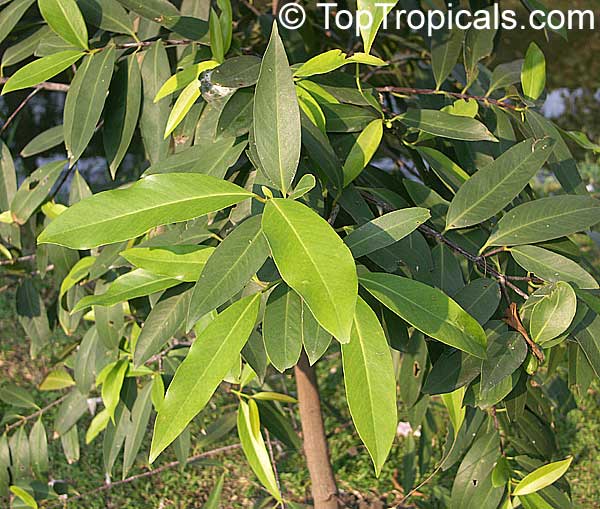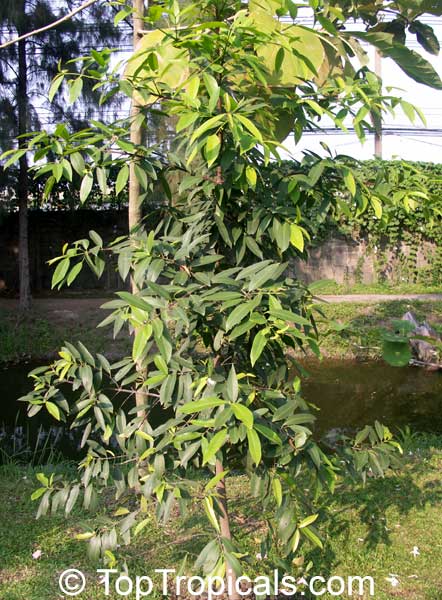Garcinia schomburgkiana (Madan)
Top Tropicals Plant Encyclopedia
Botanical name: Garcinia schomburgkiana
Common name: Madan
Family: Clusiaceae / Guttiferae
Origin: Thailand





Garcinia schomburgkiana, also known as Madan, is a small tree that can grow up to 10-20 feet tall and is native to Thailand. It belongs to the Garcinia genus and is common in Southeast Asia. Madan grows best in USDA zones 9-11 and requires full sun and regular water. Madan trees can be grown in containers in cold regions. They require plenty of sunshine and well-draining soil.
The tree is both an edible and ethnomedical plant that is highly valued for its health benefits and traditional medicinal uses.
The fruit of the madan tree is tart and varies in color from yellow to orange. It is about the size of a cherry tomato and is rich in vitamin A and calcium, as well as other beneficial compounds. The fruit is usually eaten fresh or added to soups, sauces, and curries to enhance their flavor. It is also used to make jams and chutneys. Madan's leaves and root are also collected for their medicinal benefits.
The fruit can be used in a sauce of shrimp paste and chili and eaten with vegetables and fish. The traditional ethnomedicinal uses of Madan leaves, root, and fruit are as an expectorant, treatment of coughs, improvement of menstrual blood quality, treatment of diabetes, and as a laxative.
Madan trees produce many fruits over the course of a growing season and are fast-growing plants that can thrive in many different climates, making them a great addition to any landscape. With regular care, Madan can be a useful addition to a home garden for many years.
Similar plants: Garcinia schomburgkiana (Madan)
- Garcinia atroviridis (Asam Gelugor)
- Garcinia gummi-gutta (Brindleberry)
- Garcinia hombroniana (Seashore Mangosteen)
- Garcinia livingstonei (Imbe)
- Garcinia mangostana (Mangosteen)
- Garcinia megaphylla (Bacuru Pary)
- Garcinia nervosa (Mountain Garcinia)
- Garcinia prainiana (Cherapu)
- Garcinia sp. (Garcinia)
- Garcinia spicata (Garcinia)

